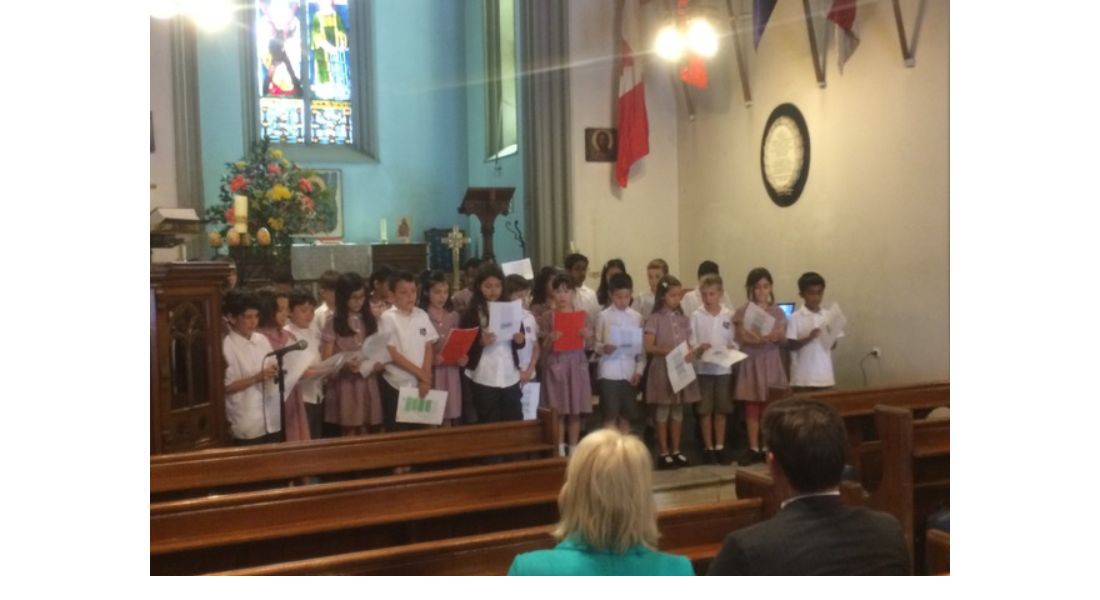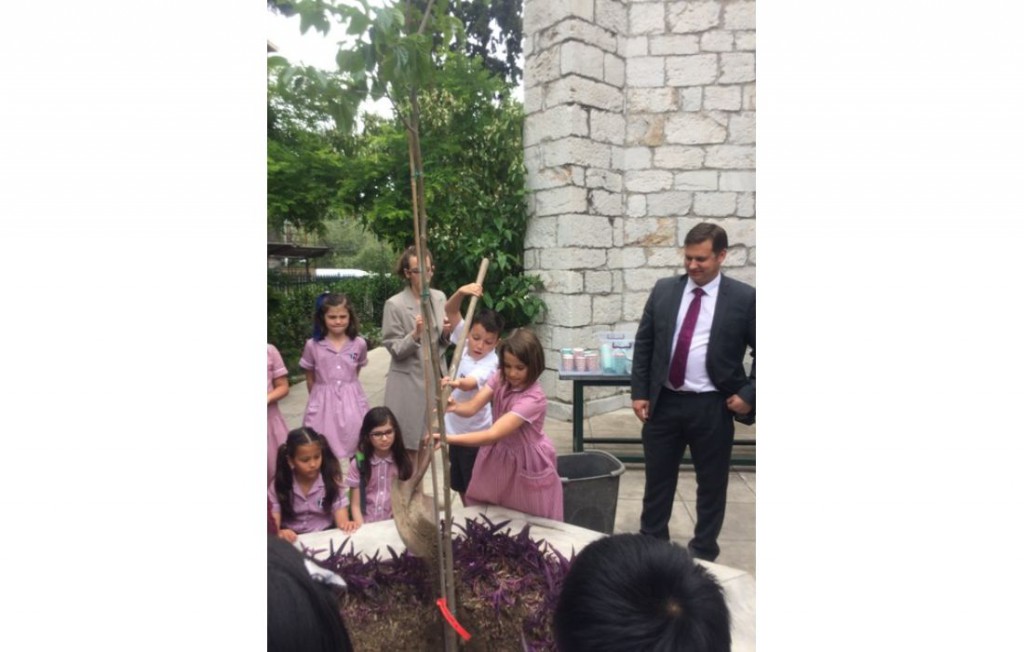
OF WAR AND PEACE
There’s nothing like welcoming a group of inquisitive, exploratory children into a space with which you think you’re familiar, to make you look at it with fresh eyes and realise just how much you take for granted, or have missed altogether.
When the two classes from Year 4 (ages 8-9) at Byron College visited St Paul’s in May, they were delighted to be able to explore the church, and look closely at the various memorials, windows and liturgical furniture which adorn the building. For many it was their first time inside St Paul’s, and for some, the first time in a Christian church of any kind. The questions they asked about the building and its purpose were insightful, thought-provoking and occasionally challenging – but that’s how we all learn, and this Priest was certainly put through his paces and caused to think hard about some of his responses!
The children came as part of their studies on issues relating to war and peace, and specifically the history of the First World War. Having visited the Commonwealth War Graves cemetery at Alimos in the morning, the visit to St Paul’s was an opportunity to think about the names recorded on the various memorials in the church and to wonder who those men were, what had brought them to Greece and why their loved ones had wanted to commemorate their lives – and their deaths – in this particular place.
After the exploring and questions, it was time for some reflection. Some students read aloud poems they had composed, and there was a beautiful reading of Psalm 23, before the whole group sang a moving song entitled ‘We Will Remember’.
It was particularly wonderful to end the visit with the planting and blessing of a mulberry tree in the church garden – a gift from the school to commemorate the centenary of the end of WW1, and a symbol of the children’s commitment to peace for the future.
The tree now stands proudly in front of the church and, over the years, will grow to provide a canopy of shade for all who sit beneath it. A special commemorative plaque has also been donated to record the occasion for posterity, including a verse from the Book of Revelation in the Bible, describing the Tree of Life in the Heavenly City, whose ‘leaves are for the healing of the nations’ (Rev: 22:2)
I am delighted that visitors to our church – now open five days a week – will be able to admire the tree and note its reason for being there, as well as enjoy the shade it will offer. And, who knows, maybe some of the friendships that will be forged and conversations shared beneath its branches, will contribute to the more peaceable world which we all, together with the children of Byron College, hope to see fulfilled.
Fr James




No Comments